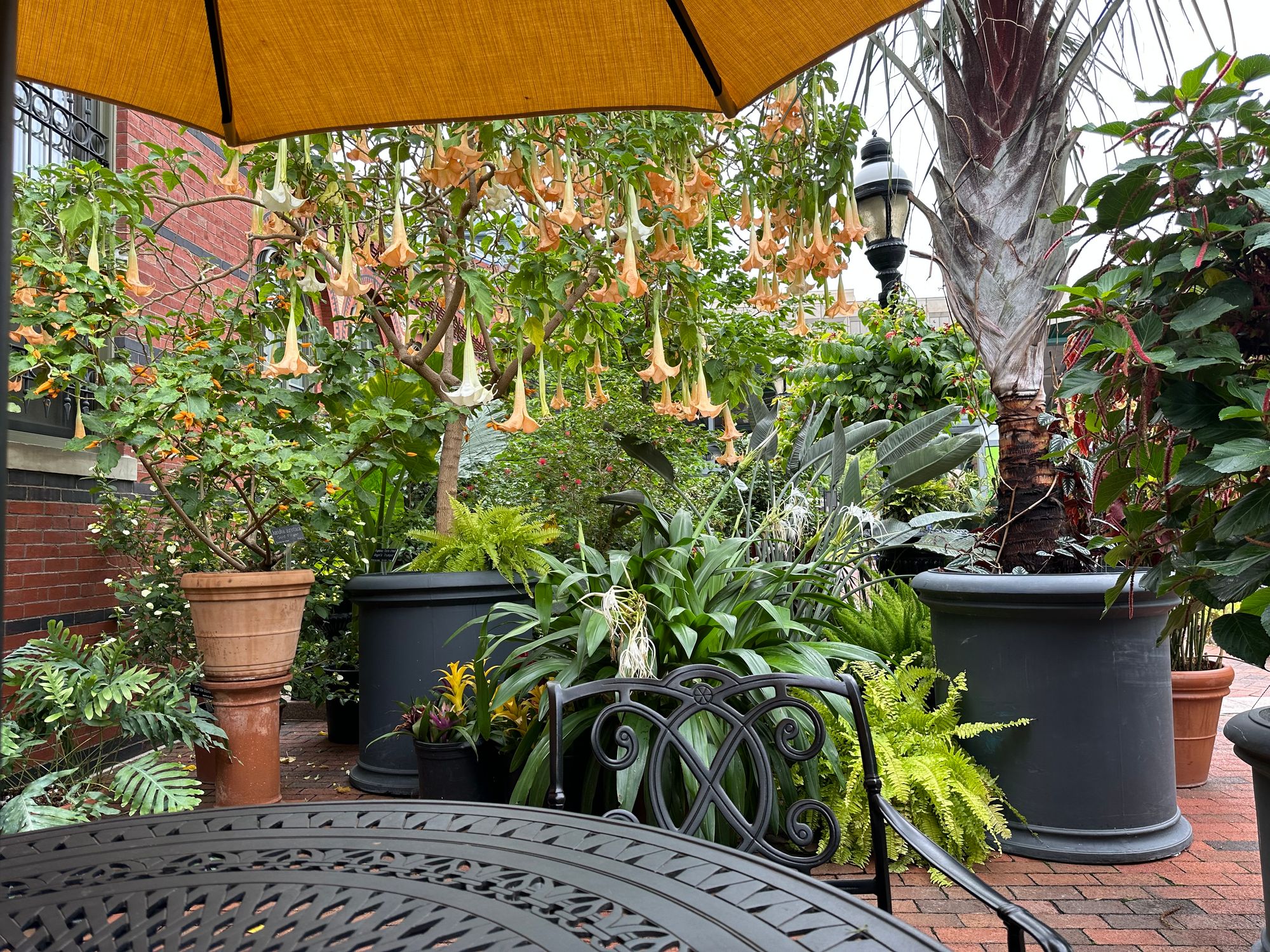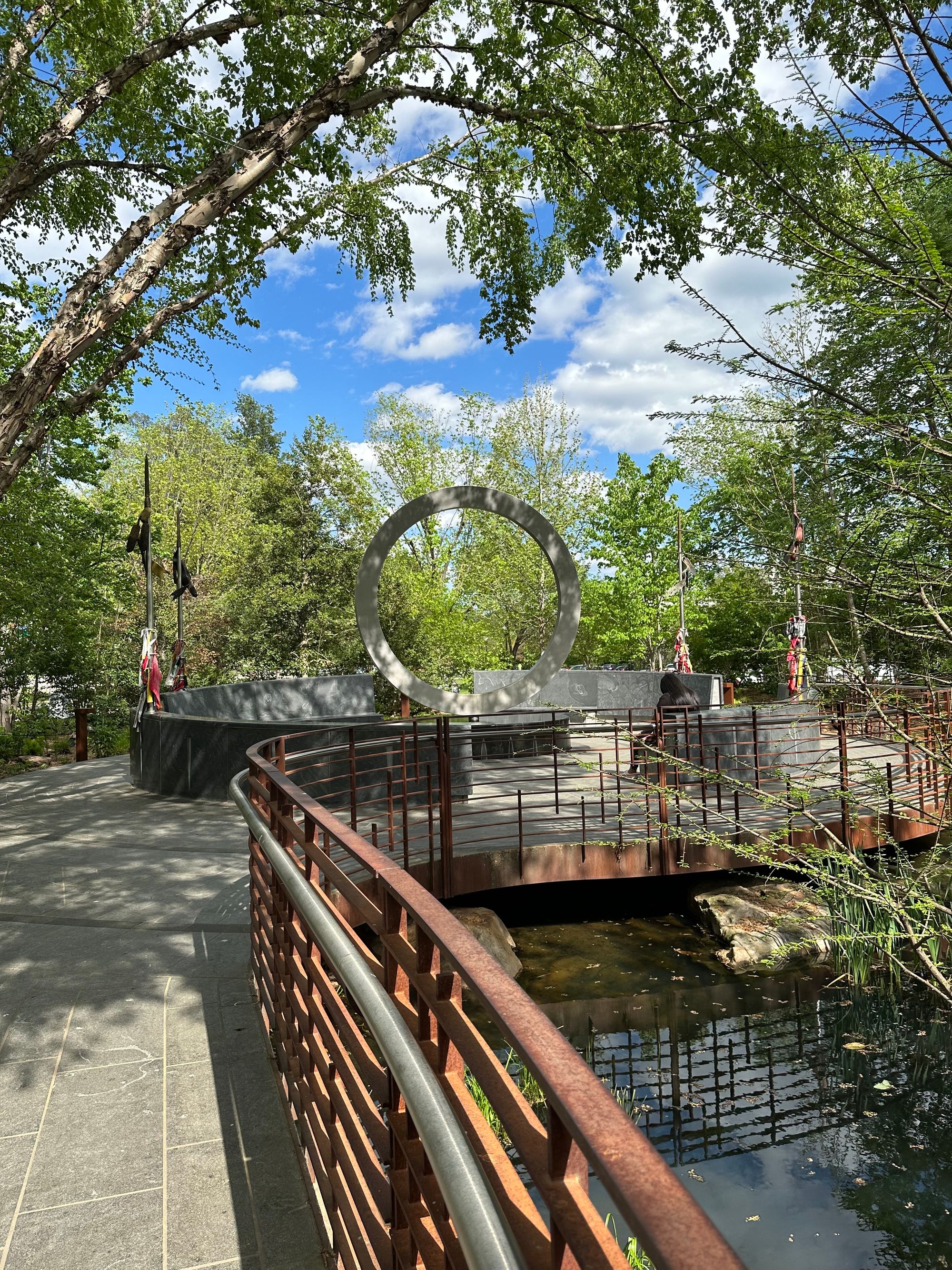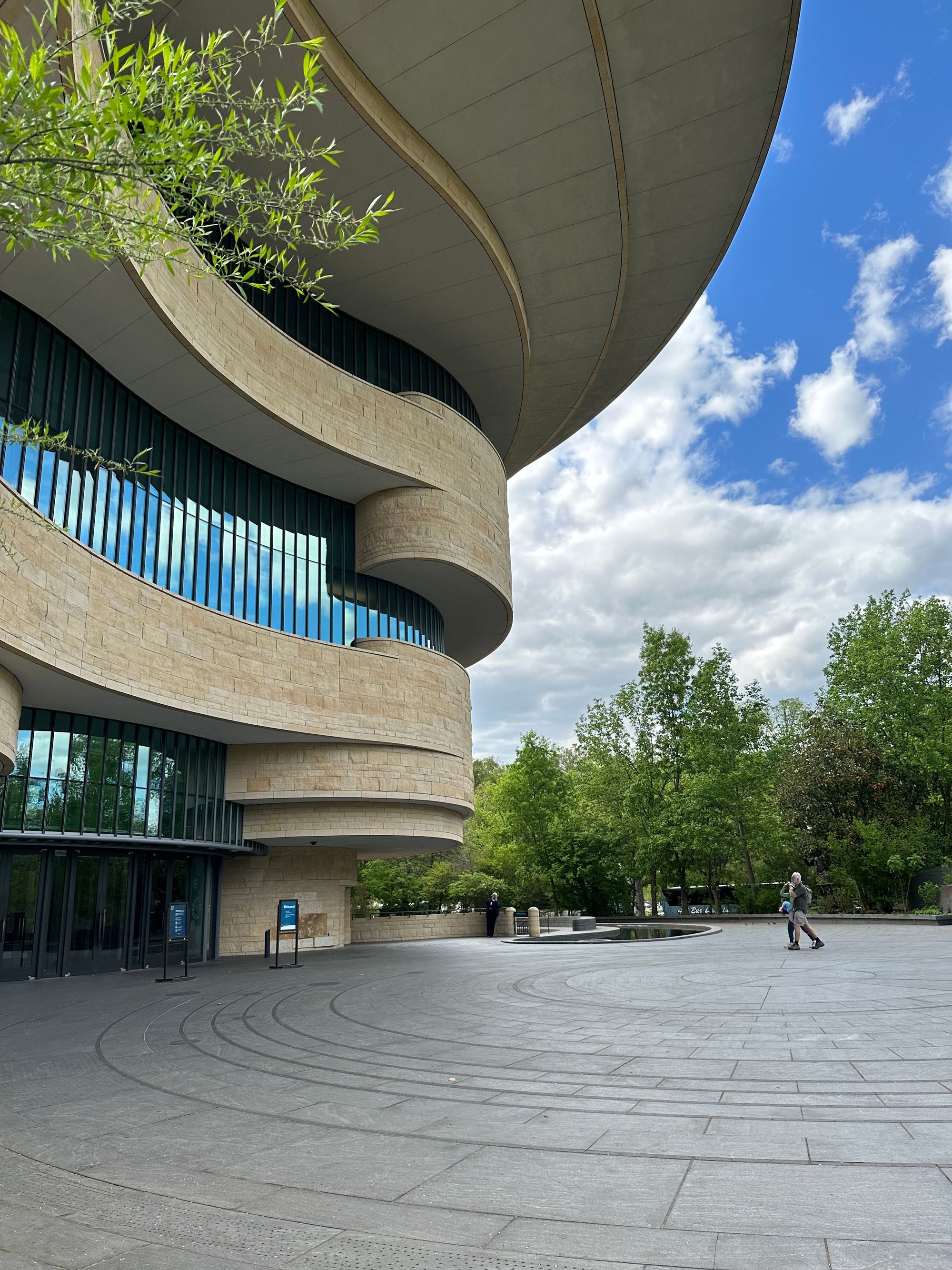Unexpected Oasis
We followed the path to a courtyard with solar-powered recharging stations as well as inviting places to sit and rest... I wish we had known about it when we took more intense trips to D.C. when our children were small.

Imagine you are visiting an extremely popular city on a 90-degree day. You've parked outside the city center, taken public transport and walked between destinations on broad sidewalks across open, grassy lawns. The sights have been well worth seeing, but the overall experience has been draining. You'd like to rest, but you've had enough of the museum cafeterias for the day. What if you found a garden full of tropical flowers hidden among the crowded museums? A place where you can sit down and rest at a table in the shade and even charge your cellphone while you relax. Doesn't that sound almost too good to be true?
That's how I felt when my daughter Milana and I recently discovered the Smithsonian Gardens behind the Smithsonian Castle on the National Mall in Washington, D.C. Between the Arts and Industries Building and the Museums of African Art and Asian Art, there is a quiet place to relax and recharge--physically, mentally and electronically.
Our visit to D.C. that day wasn't a full tourist day. We had planned to go into the District just to see the National Museum of Asian Art. On our ride in on the Metro though, we decided to have lunch at the National Museum of the American Indian. The American Indian Museum is relaxing and the food there is better than other Smithsonians. We took the time to see a couple of exhibits while we were there. And we visited the gardens on the grounds of the museum as well as the Native American Veterans' Memorial. I've thought for a while that the garden around this Museum brings much needed tranquility to the National Mall. I would have said it was the best place to catch your breath in the area, but that day we found something else even more suited to taking a break.


After we left the American Indian Museum, we walked down Independence Avenue toward the Sackler Gallery and the National Museum of Asian Art. Just past the beautiful but inaccessible Arts and Industries Building, we saw an inviting pathway. We needed to take a few minutes and deal with some logistical matters on our phones, so I wanted to find a quiet place to sit down. We followed the path to a courtyard with solar-powered recharging stations as well as inviting places to sit and rest. This little area connects to the larger Enid A. Haupt Garden, which I couldn't believe I'd never seen. This area was perfect for what we needed that day, and I wish we had known about it when we took more intense trips to D.C. when our children were small.
Of course, perhaps I would have learned about these gardens sooner if I treated Washington like I treat other destinations and done more research. I act like I know everything there is to see in Washington, which just isn't true at all. I'm sure I haven't spent more than thirty days there since a summer I spent at GWU in the 80's.
Washington, D.C. was the first city I explored on my own and it feels deeply familiar. It was the first place I rode a subway, had Ethiopian food, ordered wine in a restaurant. But that feeling of familiarity is misleading. I almost kept walking on the big, broad sidewalk instead of turning off onto the smaller path to the garden that day. I thought I knew where I was going.
This seems obvious to me now, but I realize I need to make sure I don't take familiar places for granted. Things change, I change and gardens get more beautiful.
